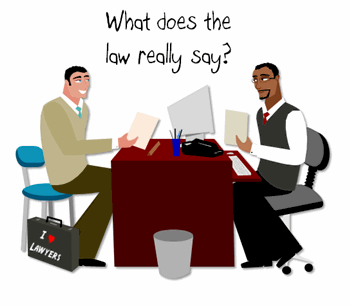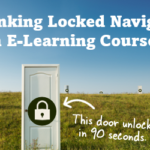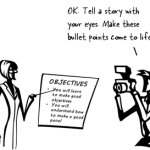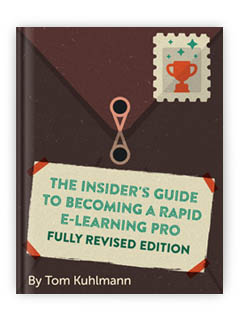
Every two years I take my car in and have the emissions tested. The goal of the test is to certify that my car meets specific emissions standards. If the car passes, I am certified and I can move on. However, if it doesn’t pass, then my car has to go under a different series of tests (and perhaps repairs) to get up to the appropriate standard and certified. Of course, this takes more time.
As I was waiting in my car, I was reminded that a lot of what we call “e-learning” is similar to the emissions testing process. The purpose of the course is not to learn, but instead to demonstrate what we already know. If we don’t pass the certification, then just like the car, we have to go through a remedial process.
When I worked for a healthcare organization, we did a lot of training like that. We weren’t really training the staff since they already knew the subject matter. Instead, we were certifying that they knew it.
Like the healthcare industry, there are many industries that require annual refresher or certification testing that has little to do with learning. In those cases, the goal is not so much to teach new skills; instead it is to certify existing knowledge. Of course, when a person doesn’t pass the certification, it identifies a clear learning opportunity.
One of the frustrating parts of the emissions testing is that, while the actual test only took a few minutes, waiting in line to take the test took a lot longer. This is especially true if you wait until the last Saturday of the month when all of the other procrastinators also show up.

Sitting in the car and waiting in line is not very productive. The same can be said for those people who already have existing skills and yet have to go through an “elearning course” before they can be tested. The ideal situation is to create an environment to assess the person’s skills and then direct them based on their results.
If the person can demonstrate the skills and knowledge, then go ahead and certify them, so they can go back to work or surf the Internet. If they can’t demonstrate the skills and knowledge, put them on a path to get it, and then reassess them later.
Compliance Training: A Real-World Example
I was talking to a colleague recently who works for a very large financial institution. Needless to say, they have many certification and annual refresher training programs. The problem he ran into with his courses was that many of the employees already knew the information, but the organization still made them go through the entire course before they could be tested and certified.
This was a great source of frustration for the employees. In addition, most courses took anywhere from 30-60 minutes to complete and each employee had to take a number of them throughout the year.
Let’s look at this from a financial perspective. The organization has over 30,000 employees. Just a ball park figure shows that 30,000 hours at $50 per hour is $1,500,000…for one course! That’s a lot of money and lost productivity.
Surely there was a more efficient approach to meet the regulatory requirements and get the employees certified. There was! Here’s what his team did to create a more efficient elearning certification process.

- They contacted their law department to better understand the real legal requirements and certification process.
- They found that in many cases they weren’t legally required to deliver a “course.” Instead they only had to document that the employees were certified and had a certain level of understanding.
- With this new information in hand (and the legal department’s blessing) they changed the structure for many of their courses by allowing the employees to test out of information they already knew.
And, what type of results did they get?
They found that for the more complex information, if they offered a pre-assessment, about 30% of their employees could skip past the course. They also found that in some of their simple 15-30 minute courses, almost 70% were able to skip past the course and be certified. Run some numbers on paper and you’ll see the savings add up quickly.
Our industry is always talking about demonstrating a return-on-investment and this seems to be a slam dunk. There’s no better way to show your value than to demonstrate that you’ve created a more efficient way to certify your employees.

Of course, this approach doesn’t work for every industry or every elearning course. But it does for many. If you do a lot of regulatory training, now might be a good time to rethink your elearning strategy. Get with your legal department and find out what the exact requirements are; and then build a course that helps you meet them.
Many of you are in industries that require certification and regulatory training, I’m interested in hearing some of your best practices.
Events
Free E-Learning Resources



















0
comments